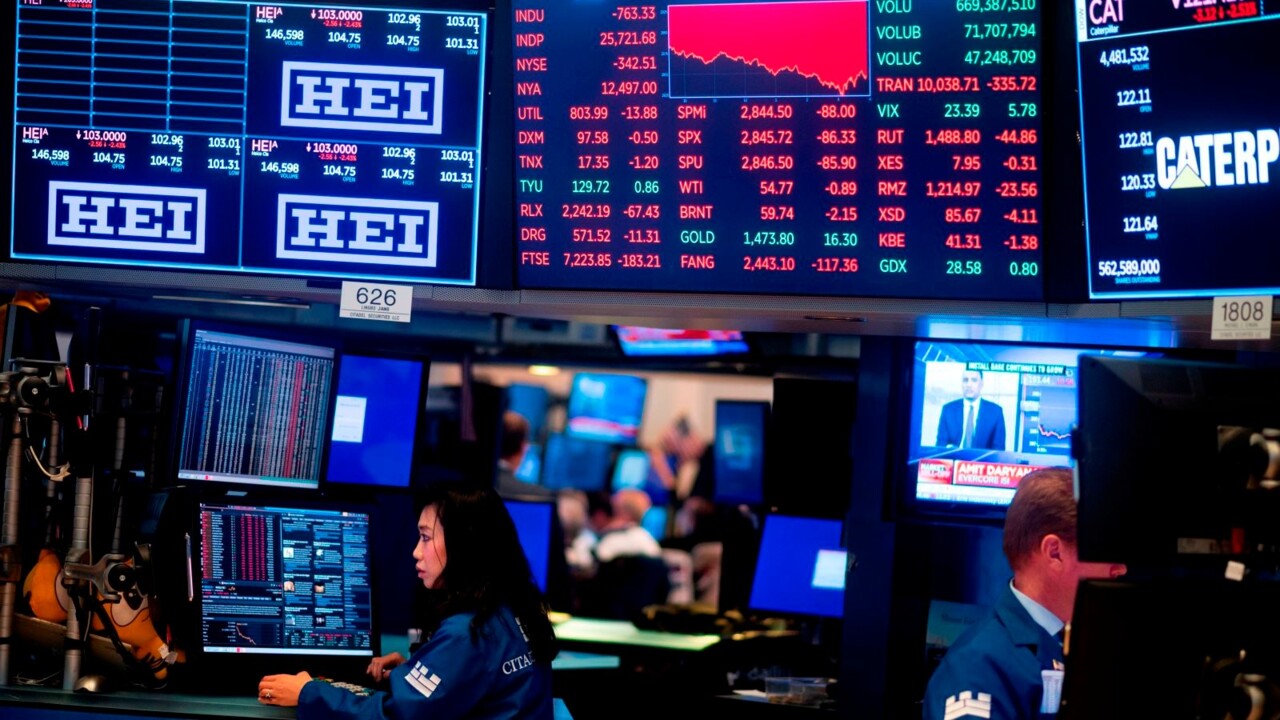Investors look to China in a big week for data
In a big week for global financial markets, the biggest ‘unknown known’ may be whether China decides to pull the stimulus lever.

In a big week for global financial markets, the biggest “unknown known” may be China.
Most fund managers don’t expect Beijing to do any major stimulus in the next three months.
But if its economic data continue to disappoint, officials may decide to pull the stimulus lever.
China’s monthly activity data including the unemployment rate are due on Friday.
Westpac’s Australian consumer sentiment survey and NAB’s monthly business survey are due on Tuesday. US CPI inflation data are due Wednesday and Australian jobs data will be released on Thursday, along with US PPI inflation and retail sales data, and the ECB rates decision.
After being repeatedly disappointed by the lack of major stimulus from China in recent months, global markets appeared to be adjusting for this possibility on Monday.
Certainly it’s a non-consensus call and one that could therefore trigger a big reaction.
BofA’s FX and Rates Sentiment Survey found that the biggest group (49 per cent) of respondents expect only more of the same “piecemeal support measures” from China.
Only 9 per cent expect “a full support package that entails property market easing, policy rate cuts and more fiscal stimulus” in China within the next three months.
Consistent with that, the percentage of respondents seeing a higher US dollar-yuan exchange rate on “disappointing China stimulus and interest rate differential” rose to 57 per cent.
Only 6 per cent see a lower dollar-yuan as “China policy stimulus restores growth momentum”.
“At this stage, such a package would be a major surprise to market participants and the consensus CNY (yuan) short expressed on stimulus scepticism,” BofA’s strategists said.
In a report over the weekend, the Wall Street Journal said President Xi Jinping’s centralisation of power is delaying the country’s response to its worst economic slowdown in years.
Officials in charge of day-to-day economic affairs have been holding increasingly urgent meetings in recent months to discuss ways to address the deteriorating outlook, the WSJ said.
Yet despite advice from China’s economists to take bolder action, officials have been unable to roll out major stimulus programs or make significant policy changes because they don’t have authority to do so, and Xi has shown few signs of worry over the outlook despite the gathering gloom and hasn’t seemed interested in backing more stimulus, according to the WSJ.

Interestingly, BofA China and Asia economist Helen Qiao continues to expect a comprehensive stimulus package in China in response to the weaker than expected economic growth plus deflation which emerged in the June quarter after a disappointing reopening from Covid-19 lockdowns.
“Policy makers can jump-start momentum if they make a prompt announcement of co-ordinated moves with a clear road map and timing,” Qiao says.
She sees the slowdown in China as being mostly driven by domestic cyclical forces, instead of structural trends or corporates de-risking their China exposure as has been rumoured.
While the ongoing service sector rebound is likely to boost month-on-month economic growth, year-on-year growth should slide further, pushing policy makers to respond more actively in September-October, according to Qiao.
“If policy makers make a prompt announcement of co-ordinated policy moves in the fiscal, monetary and property space with a clear road map and timing, it would be helpful to regain policy credibility and jump-start demand momentum,” she says.
“Failing to do so in time could imply a potential delay of effective easing by another four to five months, raising the risk of further downward pressure on growth, especially in 2024.”
She says that while exports suffered from a double-digit contraction in recent months, the larger drag came from weaker investment caused by property market turmoil, a scarring effect from balance sheet damage during the pandemic, policy over-tightening, and a decline in policy credibility.
Western “decoupling” and “de-risking” from China could weaken the base for external demand, but she sees little evidence that it’s the main reason behind the recent export weakness.
“Despite growing concerns on geopolitical risks and the rocky US-China relationship, the bilateral trade value reached $US716bn last year, a new record high,” Qiao says. “We are not suggesting that decoupling will not hurt China’s economy but that it will not happen overnight.”
At the same time, Morgan Stanley notes that iron ore prices have defied both the US bank and market consensus expectations for the past two months.
“The timing of anticipated steel cuts is being challenged and market focus has been to search for signs of stimulus amid the rubble of faltering data in China,” says Morgan Stanley Australia equity strategist Chris Nicol.
Singapore iron ore futures rose 3.3 per cent to $US117.10 a tonne on Monday, hitting a five-month high. Copper futures jumped 1.8 per cent.
“China’s deleveraging efforts are slowing aggregate demand significantly and taking price indices into deflationary territory,” Nicol says.
“The key to China’s macro outlook is its fiscal policy over the coming weeks and months.”
While China’s policymakers have taken key steps to reflate the economy, further fiscal easing and debt resolution are needed to improve long-run growth and the inflation outlook, he adds.
“The continued debate around risks of China entering a debt-deflation loop is alive and it is these elevated risks that keep us in a mood to continue to fade any bulk resource sector bounces that are triggered by stimulus evolution.”




To join the conversation, please log in. Don't have an account? Register
Join the conversation, you are commenting as Logout